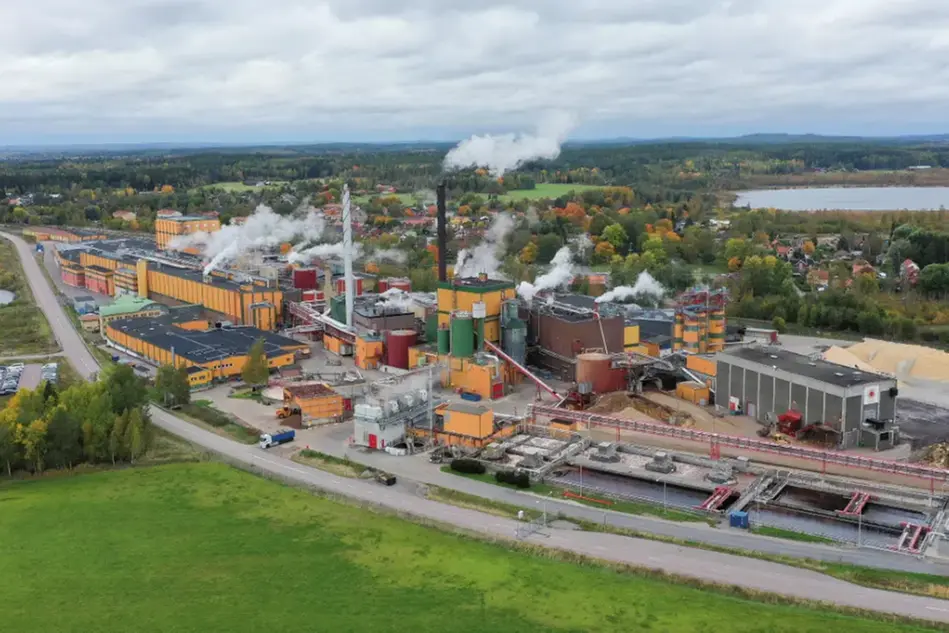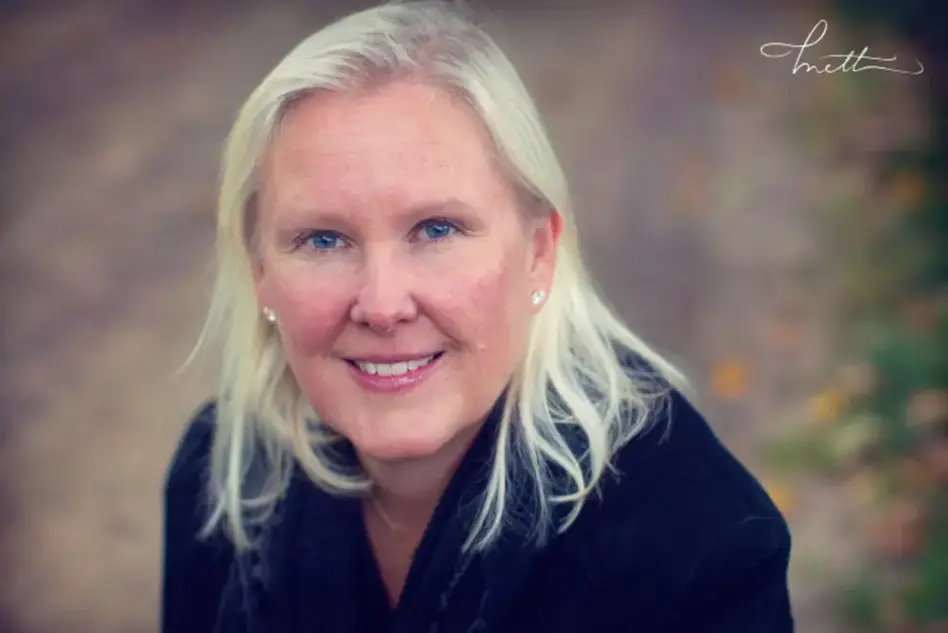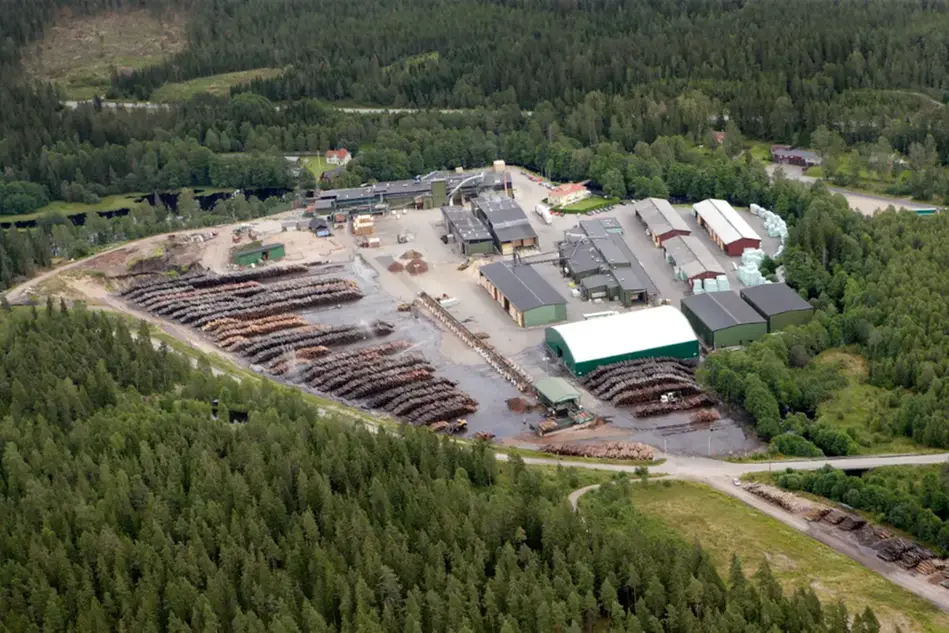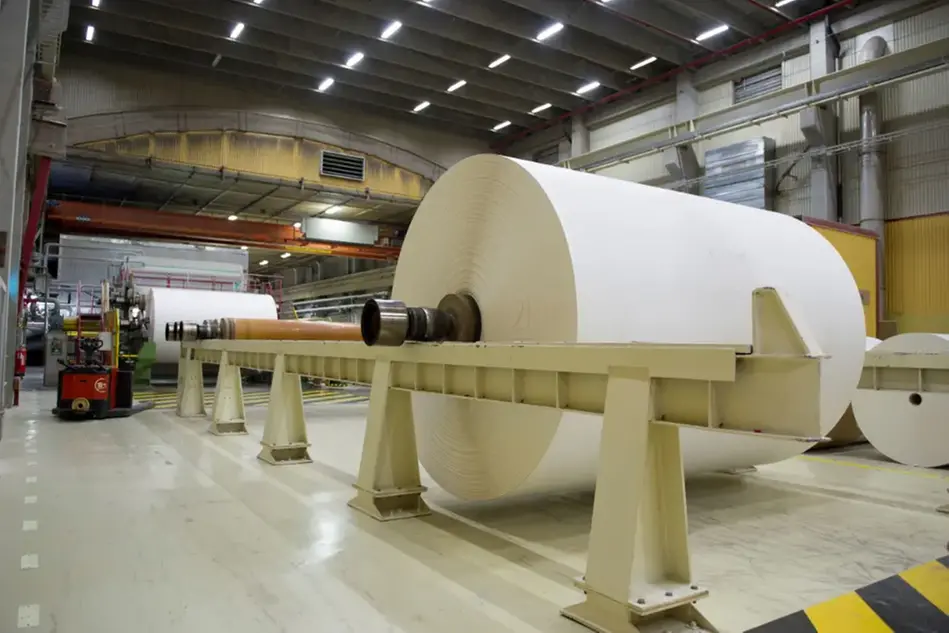Sustainable work-life in the forestry industry
How can you create sustainable processes that improve the work environment in the forestry industry? In the research project “Sustainable work-life”, Pia Ulvenblad, Docent in Business Administration at Halmstad University, has followed four companies from the forestry industry for almost three years to examine this. The project has led to several scientific articles and the brochure “Safe together in the forestry industry”. The research is based on dialogues with 170 employees within the forestry industry and shows important success factors to create a safer work environment.
“Centralfonden has a clear goal that these processes should involve all parties, so we have worked with occupational healthcare, employees, employers and unions the entire time.”
Pia Ulvenblad, Docent in Business Administration

Stora Enso Fors Bruk was one of the organisations that took part in the project.
In 2019, Centralfonden, a foundation working for a sustainable work-life for employees within the forestry industry, initiated the project “Sustainable work-life”. The goal was to create sustainable and stable processes that improved the work environment in the forestry industry, both regarding the physical and psycho-social work environment. Pia Ulvenblad, who has worked with matters regarding leadership, employeeship and organisational development, was asked to be an ongoing monitoring consultant and continuously and interactively evaluate the project.
A demand-based project
The project was made up of three parts – analysing the current state, making an ongoing evaluation, and giving feedback – and was carried out in four organisations: Aspa Bruk, Stora Enso in Fors and in Skoghall, as well as Unneforssågen Södra. Pia Ulvenblad and her research colleagues examined what the organisations were currently good at, which areas they wanted to improve, and what obstacles existed on the road to success. In total, this led to around 170 dialogues with employees in the forestry industry.
In the forestry industry, there is a lot of shift work, which some of the organisations chose to focus on, whereas others already had a thorough physical work environment management in place and wanted to focus more on the psychosocial work environment.
“These were matters based on the demands in the organisations, and that’s why the companies chose to examine different things. Centralfonden has a clear goal that these processes should involve all parties, so we have worked with occupational healthcare, employees, employers and unions the entire time”, says Pia Ulvenblad.

Pia Ulvenblad is a Docent in Business Administration focusing on Organisations and Leadership.
What is work environment management?
In the Swedish work environment law, there are general requirements for the environment in the workplace, and they apply to all employers. Physical, psychological and social work conditions are included in the work environment.
Systematic work environment management means examining, carrying out and following up the activities within the organisation to prevent accidents and poor health. When you work systematically with the work environment, you look at how the employees are doing in the workplace, what contributes to a good experience, and how it can become better.
Surveying during the pandemic not a problem
The University’s researchers were lucky and could visit the workplaces during the autumn in 2019, before the pandemic. That meant they could sit with the machine operators and ask questions in the control rooms where processes are being supervised through monitors and distance operation control. After that, most of the interviews and focus groups have been done digitally through Zoom.
“I didn’t experience any problems with doing part of the surveying through Zoom, but I think that it would’ve been difficult if we hadn’t had the time to visit the workplaces at all, since we weren’t familiar with the industry. That experience was very beneficial, since we could ask questions with that background knowledge”, says Pia Ulvenblad.
In a way, the pandemic actually brought on something positive.
“It would have taken a lot of time to go to Fors and Skoghall, so without Zoom, I don’t think we would’ve been able to do 170 interviews. That means we have been able to gather a bigger database during the pandemic than we would’ve been able to otherwise”, she says.
That being said, Pia Ulvenblad still appreciates being able to visit the companies. In 2020, she and her research colleagues received funding through the ÅForsk Foundation for another project, where the goal was to shadow the managers to be able to depict their everyday work-life.
“In 2022, we have shadowed 14 managers at Aspa Bruk outside of Askersund, and during this we have been able to be onsite, which makes me very glad!”
These findings were also published in the brochure, to include both the employers’ and employees’ perspectives.

Unneforssågen Södra.
Important to work together
What insights has the project led to, then? Well, everyone has their own area of responsibilities, and they have to meet in the middle to solve certain issues, according to Pia Ulvenblad.
“It’s important to work with these matters together. It’s not like it’s only the managers or a certain group that are supposed to do the work, but instead the work has to be inclusive. It’s only necessary to look at the different responsibilities. Managers have a huge legal responsibility for handling the work environment issues, but individuals also have a responsibility.”
“It’s important to work with these matters together. It’s not like it’s only the managers or a certain group that are supposed to do the work, but instead the work has to be inclusive.”
That responsibility could for example consist of eating and sleeping correctly when working shifts. This became evident in the 56 interviews that were conducted at two paper mills.
“It was clear that there was a worry among employees if there was a newly employed co-worker who for example ate pizza at night. Then they could feel like, ‘Woah, are we going to work together? This person won’t have the energy to help out when something happens.’ We never would have figured that out on our own. At Stora Enso they were working on creating a shift work programme, where employees who work in shifts receive a guide for what they need to think about regarding diet, sleep and exercise, so that they can handle work better.”
Pia Ulvenblad emphasises the importance of connecting mandates with responsibilities.
“If someone has a responsibility but not the necessary mandate or resources, the result won’t be very good.”

At Stora Enso Fors Bruk, they worked on creating a shift work programme.
Less people on sick leave and fewer accidents
The surveying has led to an abridged brochure that Centralfonden is distributing to other organisations in the forestry industry. Pia Ulvenblad believes that the study can lead to a socially sustainable work environment, with better collaboration with the occupational healthcare, less people on sick leave and fewer accidents due to sleep deprivation, for example. She hopes that any employees reading the brochure will feel inspired to, at least in those cases where these do not already exist, start meeting places in their organisations where these matters can be discussed, especially when it comes to psychosocial matters.
The research regarding these matters does not end here.
“I have received 2.3 million SEK from Afa Försäkring for an additional three years of research, which makes me very happy. The next project is called ‘Safe together – inclusive safety culture’, where the aim is to include the employees so that they can work on their self-leadership. We would also like to work with coaching to see if this can benefit the work environment management. The workplaces already have several tools, but we hope to be able to contribute with two new building blocks they don’t already have.”
Text: Emma Swahn
Portrait: Mette Ottosson
Other photos: Stora Enso Fors Bruk, Södra’s photography archive
About the project
Participating researchers
Research in the form of interviews and observations of managers’ everyday work life:
- Pia Ulvenblad, Docent in Business Administration focusing on Organisations and Leadership
- Henrik Barth, Docent in Industrial Organisation
Research in the form of observations of managers’ everyday work life:
- Per-Ola Ulvenblad, Adjunct Lecturer
- Anders Billström, Adjunct Lecturer
Collaboration partners
- Centralfonden
- Aspa Bruk
- Stora Enso in Fors and Skoghall
- Unneforssågen Södra
Financiers
- Ongoing monitoring consultant project: Afa Försäkring
- Observation of managers’ everyday work life: ÅForsk Foundation
- Financing the participating organisations’ development resources: Centralfonden Foundation
About Pia Ulvenblad
Pia Ulvenblad is a Docent in Business Administration focusing on Organisations and Leadership and has been working at Halmstad University for 27 years. In her dissertation, she examined how new businesses work with their communication strategies and business development, and she has for many years been working with the Swedish food industry.
In collaboration with Marie Mattson, Professor of Environmental Science, she is developing a potential research programme at the University called ProActs, which stands for “Promoting resources, co-creative Actions, and innovation for Sustainable transition”. All research programmes at the University should in a clear manner contribute to one or both the University’s two focus areas – Health Innovation and Smart Cities and Communities – as well as being long-term, relevant to society and cross-disciplinary, and ProActs is meant to become such a cross-disciplinary research collaboration.

